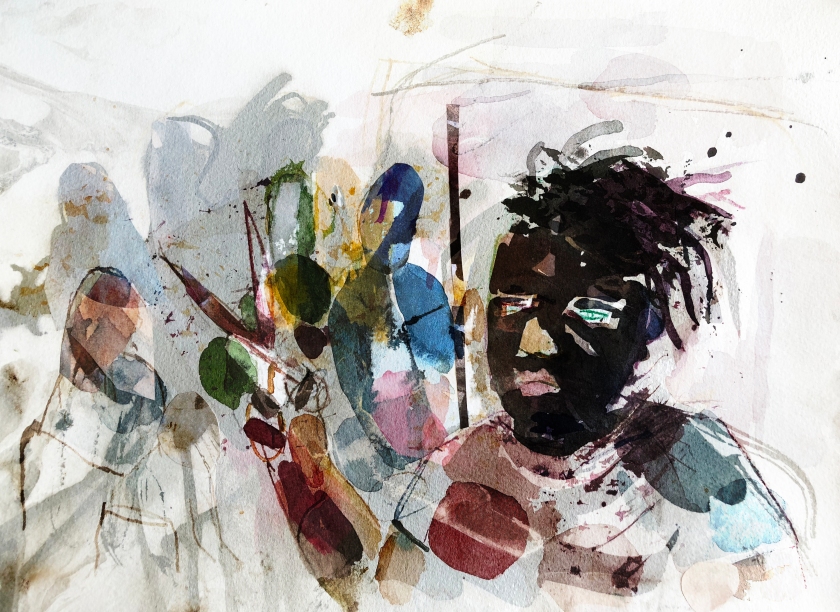Resume of the tutorial with Jonathan Kearney
Date: February 2. 2017
Topic: What is going on now and what next.
I explained that I’m on my way coming back to the project, after a period with family problems. My way into the project is to start working with practice; painting, After Effect, sound recording. The last thing I did was experimenting with voice replacement.
I told Jonathan about my plan testing Argumented Reality, and my upcoming meeting with Nikolai Stausbøl, one of my former students who know a lot about AR.
My expectations of using AR are on a really simple level, and will not stand alone in my final show. I see a kind of mixed media; video projection, still images and AR. I want to make an experience where the elements (video, AR and stills) not dependent on each other. Therefore, I will experiment with video projection, AR and multiple screens. Testing what is the best expression form for my project.
Jonathan mentioned what I talked about last time; the idea of having a divided space with a fixed element, where the audiences see the space and then the extra layer from AR.
Hololenses has a narrow point of view, it is like having too small screens in front of your eyes. But AR is much more than Hololens.
Jonathan recomanded me to participate in the AR and VR workshop at the Low Residency.
I talked about AR project which has inspired me. Particularly one project, focusing on Syrian refugees through a kind of Pokémon Go concept. Two-dimensional figures in the real environment. My idea is having flat elements in a real world.
Jonathan thinks it is a great idea and it is consistent with my style. The subtle animation in the last blog post worked very well.
I reflect over the duration of the sequence. I expired that I have to give more time / longer duration. It is the big difference between art and motion graphic design.
Jonathan recomanded me to keep it simple, not let me go with the wauw-effect of the technology, but focusing on the dreamish mood.
I can make something around AR, prints, and video, I can make a straight video as well. As more, I make a body of work I can decide what to show. At the final show, I don’t have to show everything I did.
About a month ago I said: Keep it simple – do it fast. Make something and then reflect on it.
Jonathan: All your previous skills and ideas are just waiting – ready to explode. The last two posts are interesting and done really well, it is just the start of it.
We talked about the exhibition of Hans Op de Beeck
Hans Op de Beeck does not work with a narrative in his video installation, it is a space where you can put in any stories. The human hands change the illusion.
I want to make a space where people can make there own narrative/stories. Jonathan said that is the difference between a straight filmmaker (not all) and an artist. A filmmaker is trying to communicate a story. You are using moving images as your language not to communicate but to create space – to create a potential connection for other people to make the connection them self.
I talked about anit-interaction and that I want to find out if Hololens can read the eyes of the viewer, like eye tracking. If that’s possible, moving things away from the focusing eye, could be interesting. Like dreams, they are hard to capture, they easily disappear, but you have the feeling of the dream in your body.
Jonathan thinks that conceptually it’s a good idea but he doesn’t think the technology is not there yet. Maybe in combination with the technology behind eye-tracking.
I explained that I on my way setting up a meeting with an anthropologist who had worked with dreams – made dream sessions.
What next:
Looking forward to Low Residency
And still the same 🙂 :
My statement for Unit 2:
· More practice
· Take risks
· Make documentation on my blog.
What to do now:
· Investigating AR in theory and praxis
· Continue making dream images
· Stil researching the subject dreams in art and as a human experience.










